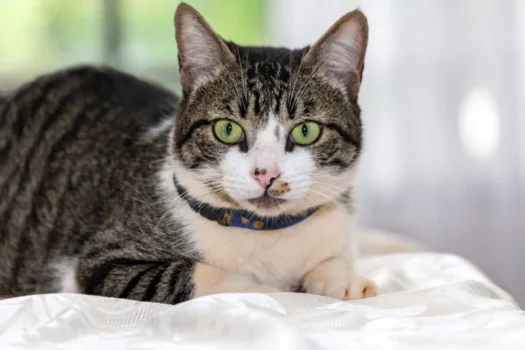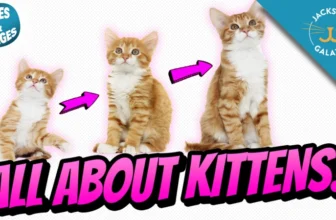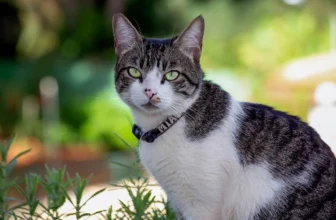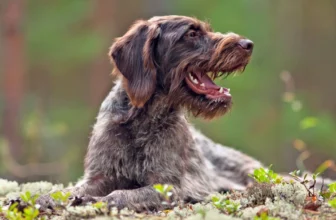As cat lovers, we all have our favorite breeds, and for some, American Wirehair cats rank high on the list. These adorable felines are known for their unique coat and charming personalities. However, have you ever wondered how breeders create cats that possess such extraordinary traits? Understanding the genetics behind American Wirehair breeding can be perplexing, but it is crucial to ensure healthy and thriving animals. In this article, we will explore the genetics of American Wirehair cats step-by-step, including the inheritance patterns and breeding strategies that help create these beautiful felines. So, let’s dive into the world of American Wirehair cat breeding genetics!
Understanding the Genetics of American Wirehair Cats
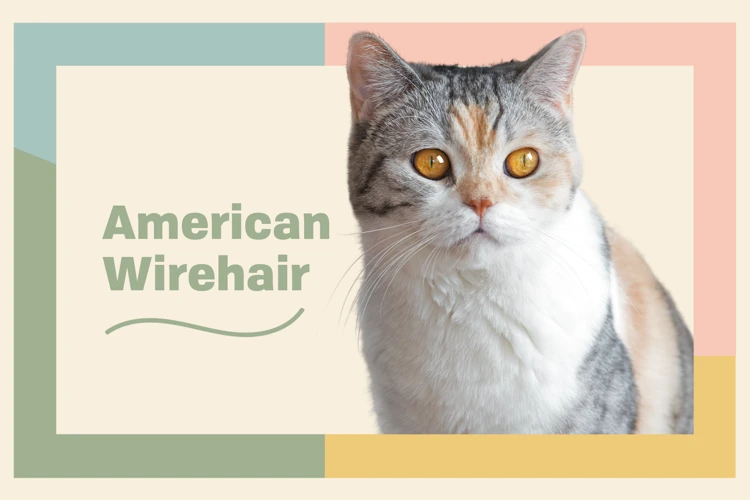
As a breeder, understanding the genetics of American Wirehair cats is crucial for producing healthy and desirable offspring. These unique cats have specific genetic traits that set them apart from other breeds, and it’s important to have a clear understanding of these traits to make informed decisions when breeding them. In this section, we’ll delve into Genetics 101 and take a closer look at the genetics of American Wirehair cats, their important genetic traits, inheritance patterns, and breeding strategies. Whether you’re a seasoned breeder or just starting out, this guide will provide you with the knowledge and tools necessary to select the best breeding pairs and ultimately produce successful litters. Let’s dive in!
Genetics 101
Genetics is the study of heredity and the variation of inherited traits. It plays a crucial role in American Wirehair cat breeding. To better understand the genetics of American Wirehair breeding, it is important to first understand some basic principles of genetics.
DNA and Genes: DNA is a molecule that carries all the genetic instructions used to develop and function an organism. Genes are segments of DNA that contain the instructions for a particular trait, such as coat color or eye shape.
Alleles: Alleles are different forms of a gene that produce variations in the particular trait. For example, there are different alleles that dictate the color of a cat’s coat.
Dominant and Recessive Traits: Dominant traits will always appear in a cat if they are present in the gene pair, even if there is only one of them. On the other hand, recessive traits will only appear if there are two of them.
Genotype and Phenotype: Genotype refers to the genetic makeup of a cat, while phenotype refers to the physical expression of those genes. For instance, a cat may have a black coat due to the presence of the black allele (genotype), but the cat’s appearance (phenotype) may be influenced by other factors, such as environmental exposure or nutrition.
Chromosomes: Chromosomes are structures found in the cell nucleus that carry genes. Cats have 38 chromosomes in each cell.
Understanding these basic genetics principles will help in understanding how traits are passed on from one generation of American Wirehair cats to the next. The next section will provide more detail on how genetics play a role in American Wirehair cat breeding.
For more information on responsible breeding of American Wirehairs, check out our guide on responsible breeding or tips for selecting a breeding pair of American Wirehairs here.
American Wirehair Cat Genetics
American Wirehair Cats have unique genetics that make them stand out from other breeds. The wirehair coat, which is the most distinctive feature of the American Wirehair, is caused by a dominant gene mutation that occurred naturally in the breed’s founding population. This mutation affects the structure of the hair shaft, making it wiry and crimped rather than smooth.
Curling Whiskers Trait: In addition to their curly hair, American Wirehairs also have curly whiskers. This trait is often associated with the wirehair coat and is caused by the same dominant gene.
Crinkled Fur Trait: Another unique feature of the American Wirehair is their crinkled, coarse fur. This is caused by a different gene mutation that affects the texture of the fur.
Dense Coat Trait: American Wirehairs are known for their dense, thick coats. This is due to a combination of genetics and environment.
Naturally Thick Tail Trait: American Wirehairs have naturally thick tails, which are plumed and expressive. The genetics behind this trait are not well-understood, but breeders select for it to maintain the breed standard.
Curled Ear Tips Trait: Some American Wirehairs have curled or folded ear tips. This is a rare genetic trait that is not always present in the breed.
Understanding Polydactylism: Polydactylism is a genetic condition that causes cats to have extra toes on their paws. While it is not specific to American Wirehairs, some breeders intentionally select for this trait.
These genetic traits are important to understand when breeding American Wirehairs. Breeders must take care to maintain the breed standard while also avoiding hereditary diseases that may be associated with certain traits. By understanding these genetics, breeders can make informed decisions when selecting cats for breeding.
For more information on American Wirehair coat colors, check out our article on American Wirehair Coat Colors. Additionally, it is important to be aware of the potential risks associated with breeding. Check out our article on American Wirehair Breeding Diseases to learn more.
Important Genetic Traits for Breeding
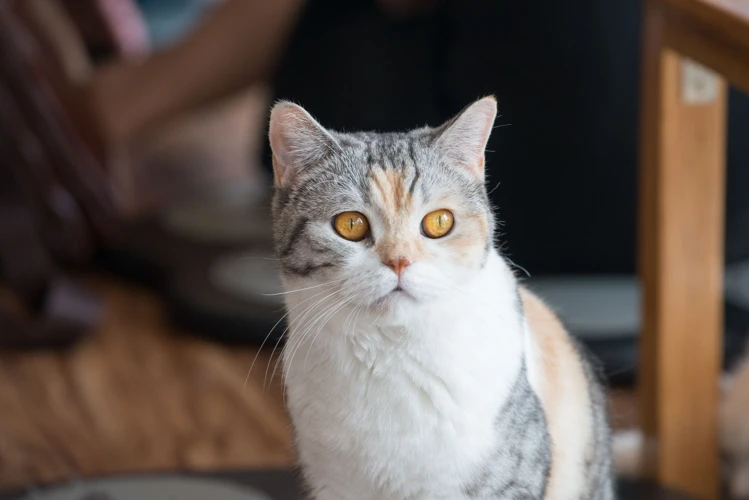
When it comes to breeding American Wirehair cats, there are several important genetic traits that must be considered in order to produce desired physical characteristics and produce healthy kittens. These traits can range from coat texture to ear shape, and it is important for breeders to have a solid understanding of genetics to make informed decisions about which cats to mate. By focusing on these traits and utilizing effective breeding strategies, breeders can set themselves up for successful American Wirehair breeding and produce healthy and desirable offspring.
Curling Whiskers Trait
The curling whiskers trait is one of the most prominent genetic traits in American Wirehair cats. This trait is what gives these cats their unique look and is highly sought after by breeders. The curling whiskers trait is caused by a dominant gene, which means that if a cat inherits even one copy of this gene, it will exhibit the trait.
Table: Offspring of Two American Wirehair Cats with the Curling Whiskers Trait
| Offspring | Inherited Genes | Outcome |
|:———–:|:—————–:|:———–:|
| 1 | WW | Curled whiskers |
| 2 | Ww | Curled whiskers |
| 3 | wW | Curled whiskers |
| 4 | ww | Straight whiskers |
As demonstrated in the table, if two American Wirehair cats with the curling whiskers trait are bred together, their offspring will inherit one gene from each parent. A dominant gene, represented by “W”, will always result in curled whiskers, while a recessive gene, represented by “w”, will result in straight whiskers. If both parents pass on a dominant gene, the offspring will have curled whiskers, while only one dominant gene will be enough for the offspring to exhibit the trait.
Breeding for the curling whiskers trait requires careful consideration of the genetic makeup of both parents. As with any trait, it is important to avoid inbreeding, which can increase the risk of genetic disorders. Instead, breeders often use outcrossing, which involves breeding with cats of a different breed or even a different variety of the same breed. This can help to increase genetic diversity and reduce the risk of inherited disorders.
To ensure healthy offspring, it is also important to test both parents for any genetic disorders that may be present. This can be done through genetic testing, which can identify carriers of certain diseases. By carefully selecting breeding pairs and using genetic testing, breeders can increase the likelihood of producing healthy American Wirehair cats with the curling whiskers trait.
Anchor: Wirehair breeder tips for breeding cats with the curling whiskers trait include selecting cats from different bloodlines, using genetic testing to identify carriers of genetic disorders, and keeping detailed records of each cat’s breeding history.
Conclusion: The curling whiskers trait in American Wirehair cats is caused by a dominant gene and is highly sought after by breeders. By carefully selecting breeding pairs and using genetic testing, breeders can increase the likelihood of producing healthy cats with this unique trait.
Crinkled Fur Trait
The crinkled fur trait is a unique characteristic of American Wirehair cats. The fur of these cats is not straight but instead looks crinkled or even kinky. This trait is due to a dominant gene, and cats that inherit just one copy of it will display the crinkled fur trait.
Interestingly, the crinkled fur trait is not limited to the topcoat of American Wirehairs. Instead, it also affects the texture of their undercoat, giving it a crimped texture that helps to insulate the cat. Because this trait is dominant, it is easy for breeders to incorporate it into their breeding programs, making it a popular trait among American Wirehair breeders.
However, breeders need to keep in mind that while the crinkled fur trait is unique and desirable, it should not be the only trait they focus on. When breeders only focus on one trait, it can result in a lack of genetic diversity, which can cause health problems in the breed down the line. Instead, breeders should strive for a balance of desirable traits while still maintaining genetic diversity.
Here is a table that shows the inheritance pattern of the crinkled fur trait:
| Crinkled Fur Trait Inheritance Pattern | Offspring from Two Normal Parents | Offspring from One Parent with Crinkled Fur Trait and One Normal Parent | Offspring from Two Parents with Crinkled Fur Trait |
|---|---|---|---|
| Chance of Inheriting Crinkled Fur Trait | No Chance | 50% | 100% |
| Chance of Inheriting One Copy of Crinkled Fur Trait | No Chance | 50% | 0% |
| Chance of Inheriting Two Copies of Crinkled Fur Trait | No Chance | No Chance | 100% |
As this table shows, if both parents have the crinkled fur trait, their offspring will definitely inherit this trait. If one parent has the trait and the other does not, then there is a 50% chance that the offspring will inherit it. However, even if neither parent has the crinkled fur trait, their offspring can still randomly develop this trait due to spontaneous mutations. Thus, it is crucial for breeders to test their cats for this trait to ensure genetic diversity in their breeding program.
If you’re a breeder or owner of an American Wirehair cat, it’s important to be aware of this unique trait and its inheritance pattern. However, make sure to focus on maintaining a diverse gene pool in your breeding program to ensure the health and longevity of the breed. For more information about American Wirehair cats, check out our article on American Wirehair Cat Pregnancy Stages.
Dense Coat Trait
The dense coat trait is one of the most distinct characteristics of American Wirehair cats. This trait is essential to the breed standard, and breeders must ensure that it is present in any breeding pair. A dense coat is thick and plush, made up of both long and short hairs.
The gene responsible for the dense coat trait is the FGF5 gene. This gene affects the length of the cat’s hair, and the mutation that causes the dense coat trait produces a longer and thicker coat. While this trait is desirable, it can also make grooming more challenging.
Appearance
Cats with the dense coat trait have fur that is thicker and fluffier than normal, with a woolly texture. The coat is so dense that it stands up when the cat is stroked in the opposite direction. This trait is visible in American Wirehair cats from birth, and the coat becomes denser as the cat grows older.
Health Considerations
The dense coat trait does not affect the health of the cat, but it does require more maintenance. The dense coat can trap dirt, debris, and even parasites, making grooming an essential part of caring for an American Wirehair.
Breeding for the Dense Coat Trait
When breeding American Wirehair cats, breeders must be sure that both parents carry the gene for the dense coat trait. This can be determined through DNA testing. Breeding two cats with the dense coat trait will produce offspring with an even denser coat, but grooming will be more challenging for both the cats and their owners. Breeders may choose to focus on other traits that are easier to maintain.
| Pros | Cons |
|---|---|
| + Distinctive appearance | – Requires more extensive grooming |
| + Can be a desirable trait for breeders | – Can trap dirt and debris |
| + Adds to the plush and cuddly appearance of the cat | – May not be the focus of all breeding programs |
The dense coat trait is a distinctive characteristic of American Wirehair cats. While desirable, this trait requires more maintenance than a typical cat’s coat. Breeders must be sure to focus on other traits and consider the level of grooming required before breeding for the dense coat trait.
Naturally Thick Tail Trait
American Wirehair cats are known for their distinctive thick coat, but their tails are also an important trait to consider in breeding. Some American Wirehair cats have a naturally thick tail that is a desirable trait for breeders to replicate.
What is a Naturally Thick Tail?
The naturally thick tail trait in American Wirehair cats is characterized by a tail that is thicker than the average cat’s tail. It can be more noticeable in some cats than others, but it is generally a desirable trait for breeders to incorporate into their breeding program.
Why is a Naturally Thick Tail Important in Breeding?
A naturally thick tail is important in breeding American Wirehair cats for a couple of reasons. First, it is a characteristic that is unique to the breed and helps distinguish it from other breeds. Second, a thick tail can be an indication of good health and genetics, which is important when breeding for overall health and longevity.
Inheriting the Naturally Thick Tail Trait
The naturally thick tail trait is a dominant trait, meaning that if an American Wirehair cat has this trait, it is likely to pass it on to its offspring. However, it is possible for a cat to carry the gene for a thick tail without actually displaying the trait itself.
Breeding for the Naturally Thick Tail Trait
In order to breed for the naturally thick tail trait, breeders must first identify cats that have this trait. They can then breed these cats selectively to increase the likelihood of producing kittens with the thick tail trait. However, it’s important to remember that breeding for any one trait should not be done at the expense of the cat’s overall health and wellbeing.
To summarize, the naturally thick tail trait is an important trait for breeders of American Wirehair cats to consider. It is an indication of good health and genetics and helps distinguish the breed from others. By selectively breeding cats with this trait, breeders can work to improve the overall quality of the American Wirehair breed.
Curled Ear Tips Trait
The Curled Ear Tips trait in American Wirehair cats is considered a desirable genetic trait by many breeders and enthusiasts. This trait gives the cat a distinct and unique appearance, as the tips of their ears curl forward in a rounded shape. But what causes this trait and how is it passed down through breeding?
Causes of Curled Ear Tips
The Curled Ear Tips trait in American Wirehair cats is caused by a dominant genetic mutation. This means that if a cat inherits a copy of the mutated gene from just one parent, they will express the trait. In the case of American Wirehair cats, the mutation responsible for this trait is located on the FGF5 gene, which is involved in hair growth.
Inheritance of Curled Ear Tips
As mentioned, the Curled Ear Tips trait is caused by a dominant genetic mutation. This means that a cat only needs to inherit one copy of the mutated gene to express the trait. If a cat inherits two copies of the mutated gene, however, this can lead to health issues such as a kinked tail or twisted limbs, so breeders must be aware of their cats’ genotypes and breeding combinations to avoid these problems.
Table: Example Inheritance of Curled Ear Tips Trait
| Genotype of Parent 1 | Genotype of Parent 2 | Probability of Curled Ear Tips Trait in Offspring |
|———————-|———————-|————————————————–|
| Homozygous Dominant | Homozygous Dominant | 100% |
| Heterozygous Dominant | Homozygous Dominant | 100% |
| Homozygous Dominant | Heterozygous Dominant | 100% |
| Heterozygous Dominant | Heterozygous Dominant | 75% |
| Homozygous Recessive | Any Genotype | 0% |
Interpretation of Table
This table shows the probability of Curled Ear Tips trait in the offspring of two cats with different genotypes. If both parents are Homozygous Dominant, meaning they each have two copies of the mutated gene, then all of their offspring will inherit at least one copy of the gene, resulting in 100% probability of expressing the trait. If one parent is Heterozygous Dominant, meaning they have one copy of the mutated gene and one normal copy, and the other parent is Homozygous Dominant, then all of their offspring will inherit at least one copy of the mutated gene, also resulting in 100% probability of expressing the trait. If both parents are Heterozygous Dominant, then there is a 75% chance their offspring will inherit at least one copy of the mutated gene. Finally, if one or both parents are Homozygous Recessive, meaning they have two normal copies of the gene, then none of their offspring will inherit the mutated gene or express the Curled Ear Tips trait.
As with any genetic trait, it’s important for breeders to consider the health and well-being of their cats before intentionally breeding for a specific trait. Proper genetic testing and careful selection of breeding pairs can help ensure that American Wirehair cats continue to be healthy and happy companions for years to come.
Understanding Polydactylism
Polydactylism is a genetic trait that some American Wirehair cats may exhibit. It means they have extra toes on one or more of their paws. While it may seem strange to some, it is not a harmful trait and is often sought after by cat breeders.
The inheritance pattern for polydactylism is autosomal dominant, meaning that the gene responsible for the trait is located on one of the non-sex chromosomes and one copy of the gene is enough to cause the condition. American Wirehair cats with one copy of the gene will have extra toes on their paws, and those with two copies may have even more extra toes.
It is important to note that not all American Wirehair cats with polydactylism will have the same number of extra toes. Some may only have an extra toe on one paw, while others may have extra toes on multiple paws. The location of the extra toes can also vary, with some cats having them on the front paws only, and others having them on the back paws as well.
Table:
| Number of extra toes | Description |
|---|---|
| 1 | Extra toe on one paw |
| 2-3 | Extra toes on one or more paws |
| 4-5 | Extra toes on multiple paws |
Polydactylism is not unique to American Wirehair cats, as it can also be found in other cat breeds and even in some dog breeds. While it may not be a harmful trait, it is important for breeders to understand the genetics behind it in order to properly breed for or against it. Regular genetic testing can help identify cats with the polydactylism gene and aid breeders in making informed breeding decisions.
Inheritance Patterns of American Wirehair Cats
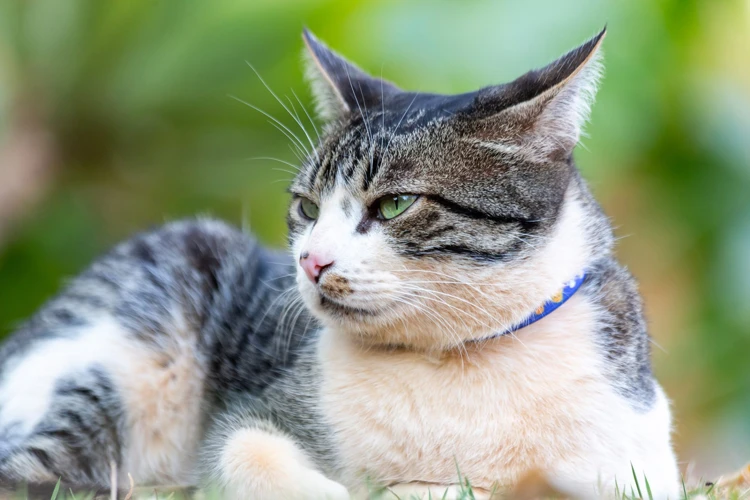
As breeders aim to produce litters with specific traits, understanding the inheritance patterns of American Wirehair cats becomes critical. By exploring different modes of inheritance in genetics, breeders can predict which traits will appear in a litter and make informed breeding decisions. Let’s dive into the world of inheritance patterns and understand how these patterns affect the breeding of American Wirehair cats.
Dominant Genes
Dominant genes are a type of gene that only needs one copy of the allele to express the characteristic trait. In the context of breeding American Wirehair cats, dominant genes can play a crucial role in determining the offspring’s physical traits. Below is a table that shows some of the dominant genes responsible for the most important physical traits in American Wirehair cats:
| Trait | Allele | Description |
|---|---|---|
| Curling whiskers | C | The dominant allele for curling whiskers causes the whiskers to curl, making them more prominent and noticeable. |
| Crinkled fur | Cn | The dominant allele for crinkled fur causes the fur to be crinkled, giving the cat a unique appearance. |
| Dense coat | D | The dominant allele for dense coat causes the coat to be thicker than usual, making it more insulating. |
| Naturally thick tail | N | The dominant allele for naturally thick tail causes the tail to be thicker than usual, making it more robust. |
| Curled ear tips | Ct | The dominant allele for curled ear tips causes the ear tips to curl, making them more unusual-looking and desirable. |
It is important to note that dominant genes can easily become fixed in a population if overused in breeding. While desirable traits can be passed down easily with dominant genes, it is essential to consider the implications of potential health issues related to inbreeding that may arise. As such, it’s vital to work with a certified breeder, who will wisely choose which dominant genes to use in breeding to prevent any genetic problems.
Recessive Genes
When it comes to the inheritance of certain traits in American Wirehair cats, recessive genes play a crucial role. These are genes that are only expressed when an individual carries two copies of the gene. In other words, if an American Wirehair cat inherits one copy of a recessive gene from one parent and a normal dominant gene from the other parent, they will not display the trait associated with the recessive gene.
Examples of Recessive Traits:
- The curled ear tips trait is a recessive trait, meaning that a cat must inherit two copies of the gene in order to display this trait.
- The crinkled fur trait is another recessive trait that requires two copies of the gene to be expressed.
- Similarly, the dense coat trait and naturally thick tail trait are both recessive traits.
In order to produce offspring with these recessive traits, breeders must ensure that both parents carry a copy of the recessive gene. This means that both parents may appear normal and not exhibit the trait themselves, but can still pass the gene down to their offspring. When two carriers of the recessive gene are bred together, there is a 25% chance that their offspring will display the recessive trait.
It is important for breeders to understand these patterns of inheritance when selecting cats for breeding in order to maintain and improve certain traits in their American Wirehair lines. However, it is also important to keep in mind the potential health risks associated with breeding close relatives, which is why genetic testing and responsible breeding practices are crucial in maintaining the health and diversity of the American Wirehair breed.
Incomplete Dominance Genes
Incomplete dominance occurs when neither allele completely dominates the other, resulting in a heterozygous phenotype that displays a blend of both traits. This genetic pattern is observed in American Wirehair cats in the form of curly fur.
When a cat inherits one curly fur allele from one parent and one straight fur allele from the other parent, their fur may display a wavy or curly texture, which is a blend of both traits. This phenomenon is known as incomplete dominance.
To better understand this concept, let’s take a look at the table below:
| Alleles | Phenotype |
|---|---|
| C | Curly fur |
| c | Straight fur |
| CC | Curly fur |
| Cc | Wavy fur (incomplete dominance) |
| cc | Straight fur |
As shown in the table, when a cat inherits two curly fur alleles (CC), they will display curly fur. Similarly, when a cat inherits two straight fur alleles (cc), they will display straight fur. However, when a cat inherits one curly fur allele and one straight fur allele (Cc), their fur will display a wavy or curly texture, which is a blend of both traits.
Understanding incomplete dominance and other inheritance patterns is essential for breeders who aim to selectively breed cats with desired traits. By using genetic testing and careful breeding strategies, breeders can work towards creating American Wirehair cats with predictable and desirable phenotypes.
Sex-Linked Genes
Sex-linked genes are those that are located on the sex chromosomes, specifically the X or Y chromosome. In cats, the X chromosome plays a crucial role in determining the cat’s coat color, pattern, and other physical traits. This makes sex-linked genes an important consideration for breeders who wish to produce specific traits in their American Wirehair cats.
One example of a sex-linked trait in cats is the gene for red or orange coat color. This gene is located on the X chromosome, meaning it is sex-linked. A male cat only has one X chromosome, so if he inherits the orange allele, he will have orange fur. On the other hand, a female cat has two X chromosomes, so she may inherit either one or two copies of the orange allele. Female American Wirehair cats have a higher likelihood of expressing the orange coat color compared to males.
Another sex-linked trait is the gene for the Agouti pattern. The Agouti gene controls the distribution of black pigment in the fur of cats. The dominant allele produces a striped tabby pattern, while the recessive allele produces a solid color. Male American Wirehair cats only inherit one X chromosome from their mother, which means that they will either inherit the dominant or recessive allele. Females, on the other hand, can inherit both alleles. This makes it more likely for female American Wirehair cats to exhibit the tabby pattern compared to males.
The inheritance of sex-linked genes can be illustrated in the following table:
| Parental Genotype | Male Offspring | Female Offspring |
|---|---|---|
| XbY x XbXb | XbY (50%) | XbXb (50%) |
| XbY x XBXb | XbY (50%) | XBXb (50%) |
| XBXb x XBXb | XBY (50%) | XBXb (25%) XbXb (25%) |
Understanding sex-linked genes is crucial for American Wirehair cat breeders who want to produce desired and predictable coat colors and patterns. By knowing the inheritance patterns of these genes, breeders can make informed decisions on which cats to breed and which traits to select for in their breeding programs.
Breeding Strategies for American Wirehair Cats
When it comes to breeding American Wirehair cats, various breeding strategies can be employed. Each strategy brings along its own set of advantages and disadvantages in terms of hereditary traits and health. Some breeders choose to outcross, while others prefer inbreeding or linebreeding. At the same time, some breeders may opt for crossbreeding to bring new genes into the cat breeding pool. It is essential to understand the impact of each breeding strategy to make informed decisions regarding the breeding program of American Wirehair cats. Furthermore, genetic testing can also assist in identifying beneficial or harmful genes that may be inherited in future generations of cats.
Outcrossing
Outcrossing is a breeding strategy that involves mating two American wirehair cats from different breeds or bloodlines. The objective of outcrossing is to introduce new genetic traits to the breeding pool, which can improve the overall health and vitality of the breed.
Benefits of Outcrossing
- Increased genetic diversity: Outcrossing allows breeders to introduce new genetic traits that might be lacking in the current breeding stock.
- Improved immune system: A diverse gene pool can increase the overall health and immune system of the breed, making them less susceptible to hereditary diseases.
- Breeding flexibility: Outcrossing can open up new opportunities for breeders to experiment with unique traits in their breeding program.
Considerations for Outcrossing
- Choose a compatible breed: The ideal outcross should be compatible, meaning the breeds being crossed should share similar physical and behavioral traits.
- Know the health history: It’s essential to research the health history of the potential outcross breed to identify any genetic diseases or health issues that might affect the offspring.
- High-quality breeding stock: The cats selected for outcrossing should be of high quality and have no previous genetic defects.
- Selective breeding: Breeders should be selective in their breeding program to ensure that the offspring inherit the desired traits.
- Registering the offspring: It’s crucial to register any offspring resulting from an outcross to preserve the documentation of their lineage.
It’s worth noting that while outcrossing can be beneficial, it can also come with some risks. The offspring of an outcross may not necessarily inherit the desired traits, or they may inherit undesirable characteristics from the other breed. Breeders should proceed with careful consideration and a sound understanding of the genetic traits involved.
Inbreeding
Inbreeding is a breeding strategy that involves mating closely related animals. This method is used to preserve desired traits in a breed but also carries certain risks. Inbreeding increases the chances of genetic defects and reduces genetic diversity. However, in some cases, it can also be used to fix desirable traits in a breed and increase uniformity.
The pros of inbreeding:
- Produces animals that are genetically similar to the best performers in the breed
- Increases the uniformity of traits in a breed
- Allows rapid fixation of desirable traits
The cons of inbreeding:
- Increases the risk of genetic defects due to the accumulation of deleterious recessive alleles
- Increases the risk of reduced fertility and viability
- Reduces genetic diversity and may lead to a loss of adaptability
It is essential to consider the long-term consequences of inbreeding before using this breeding strategy. The risks associated with inbreeding can be reduced by carefully selecting the animals to be mated using genetic testing and avoiding breeding individuals with genetic defects.
It is important to note that some breeds are more prone to inbreeding due to their small population sizes. This can exacerbate the risks of inbreeding and lead to the loss of genetic diversity over time. In these cases, outcrossing or other breeding strategies may be necessary to maintain genetic diversity and avoid the accumulation of deleterious mutations.
In general, inbreeding should be used with caution and only when necessary to achieve specific breeding goals. Breeders should carefully consider the risks and benefits of inbreeding before using this breeding strategy.
Linebreeding
Linebreeding is a selective breeding strategy that involves breeding two cats who are closely related, such as a parent and offspring or full siblings. This technique is used to increase the likelihood of inheriting desirable traits while maintaining genetic diversity. Linebreeding is a delicate balancing act that requires careful consideration of various factors like health, temperament, and appearance.
Benefits of Linebreeding
Linebreeding can be a valuable tool for cat breeders in improving the breed in several ways. Firstly, by mating cats with similar traits and characteristics, breeders can improve the predictability of offspring traits. Secondly, it can help to eliminate undesirable traits gradually and ensure consistency in breeding. Finally, linebreeding can be used to strengthen specific qualities in a breeding program.
Challenges of Linebreeding
Despite its advantages, linebreeding can also bring challenges to breeding programs. One of the most significant concerns is the potential for inbreeding depression, which is when close relatives mate, increasing the chance of inherited genetic defects. Inbreeding can also lead to a loss of genetic diversity, which is essential for maintaining a healthy population of cats. Finally, linebreeding requires careful record-keeping to avoid accidental matings between closely related cats.
Example of Linebreeding Strategy
To understand how linebreeding works in American Wirehair breeding, consider the example of breeding two cats that carry the dominant gene for curly whiskers. The table below illustrates the possible outcomes of such a breeding program.
| Offspring | Possibility |
|---|---|
| Curly Whiskers | 75% |
| Straight Whiskers | 25% |
In this table, we can see that there is a 75% chance that the offspring will inherit the desirable trait of curly whiskers. Breeders can use linebreeding to increase the likelihood of producing offspring with this trait. However, it is crucial to note that this breeding strategy must be done carefully and with knowledge of the genes involved, as increasing the frequency of one trait can lead to a decrease in genetic diversity and an increase in the likelihood of inherited defects.
In Conclusion
Linebreeding can be a useful tool in American Wirehair breeding when used correctly. It can help increase predictability, eliminate undesirable traits, and enhance desirable qualities. However, it also brings potential challenges, such as inbreeding depression and a loss of genetic diversity. Linebreeding must be done with care and attention to the cats involved and their genetic background.
Crossbreeding
Crossbreeding is the practice of breeding two different breeds of cats to create a new breed. This can introduce new genetic traits that may not have been present in either of the original breeds. It can also help reduce the risk of inherited diseases and genetic defects, as it introduces a wider gene pool.
Here are some of the benefits of crossbreeding:
- Diversity: Crossbreeding increases genetic diversity, which can help produce healthier cats. It reduces the risk of genetic disorders caused by inbreeding and promotes better immune systems.
- Traits: Crossbreeding creates unique traits that are not present in either of the original breeds. For example, breeding an American Wirehair with a Siamese may produce a cat with the characteristic crinkled fur of the American Wirehair and the pointed coat of the Siamese.
- Experimentation: Crossbreeding allows breeders to experiment with new traits and patterns, which can lead to the creation of new breeds.
However, crossbreeding can also have its drawbacks. It can be difficult to predict the traits that will be inherited from each parent breed, and some genetic traits may prove to be undesirable. Additionally, it can take several generations of breeding before the desired traits become stable. It is important to carefully consider the risks and benefits of crossbreeding before attempting it.
Genetic Testing
Genetic testing has become an essential tool for American Wirehair cat breeders. It helps to identify the presence or absence of certain genetic traits and diseases, ensuring that breeding programs produce healthy and desirable offspring. Here are some key points to keep in mind when it comes to genetic testing:
- Testing for specific traits: There are various tests available that can determine whether a cat carries certain traits, such as the curled whiskers or crinkled fur that are characteristic of the American Wirehair breed. These tests are particularly useful when it comes to selecting breeding pairs, as they can help to identify cats that are more likely to produce kittens with the desired traits.
- Testing for genetic diseases: Genetic testing can also be used to identify whether a cat carries certain diseases that could be passed on to their offspring. For example, some American Wirehair cats are prone to hypertrophic cardiomyopathy, a heart disease that can be inherited. Breeding cats that have been tested negative for the disease can help to reduce the risk of passing it on to future generations.
- The importance of accuracy: It’s crucial to ensure that genetic testing is carried out by a reputable laboratory to ensure that results are accurate. Inaccurate results can lead to poor selection of breeding pairs, which can have a negative impact on the health and wellbeing of the cats being bred.
- Balancing genetic diversity: While genetic testing is important for breeding programs, it’s also essential to maintain genetic diversity within the breed. Over-reliance on a small pool of cats with desirable traits can lead to deleterious effects on the overall health and wellbeing of the breed. Breeders must aim to strike a balance between maintaining desirable traits and promoting genetic diversity.
Genetic testing is a valuable tool for American Wirehair cat breeders that helps them to make informed choices about breeding pairs. However, it’s also important to ensure that results are accurate and to maintain genetic diversity within the breed. By keeping these points in mind, breeders can work towards improving the health and wellbeing of the American Wirehair breed.
Conclusion
After understanding the genetics of American Wirehair breeding, it’s clear that breeding these cats involves careful consideration of genetic traits and inheritance patterns.
It is important to remember that genetics is not the only factor to consider when breeding American Wirehair cats. The health and temperament of the cats should also be taken into account. Breeders should strive to produce healthy and happy cats that meet the breed standards.
When selecting breeding pairs, breeders should consider the traits they wish to encourage or avoid. Genetic testing can also help identify potential health issues and allow breeders to make informed decisions.
Outcrossing, inbreeding, linebreeding, and crossbreeding are all viable breeding strategies for American Wirehair cats. However, each strategy has its advantages and disadvantages, and breeders should carefully consider which strategy is best for their goals.
Overall, the key to successful American Wirehair breeding is to prioritize the health and welfare of the cats. By carefully selecting breeding pairs and utilizing genetic testing, breeders can work towards producing healthy cats with desirable traits.
Frequently Asked Questions
What is the average lifespan of American Wirehair Cats?
The average lifespan of American Wirehair Cats is around 12-15 years, but with proper care and nutrition, they can live up to 18 years.
What is the best diet for American Wirehair Cats?
American Wirehair Cats thrive on a high-protein diet that includes meat, fish, and poultry. It’s also important to give them adequate vitamins and minerals.
Are American Wirehair Cats hypoallergenic?
While no cat breed can be 100% hypoallergenic, American Wirehair Cats are known to shed less hair and dander than other breeds, which may reduce allergen exposure for some people.
What is the temperament of American Wirehair Cats?
American Wirehair Cats are known for their friendly and relaxed temperament. They are social animals that enjoy the company of their owners and are generally good with children and other pets.
Are American Wirehair Cats good indoor or outdoor cats?
American Wirehair Cats can thrive both indoors and outdoors, but it’s recommended to keep them primarily indoors for their safety and health. Outdoor time is still important for exercise and stimulation, but supervised and in safe locations.
What is polydactylism in American Wirehair Cats?
Polydactylism is a genetic trait that causes American Wirehair Cats to have extra toes on their paws. This trait is common in this breed and is not usually a health concern.
Is it recommended to breed American Wirehair Cats with other breeds?
It’s recommended to only breed American Wirehair Cats with other American Wirehairs or breeds that share similar genetics to avoid health problems or unwanted genetic traits.
What are the typical grooming needs for American Wirehair Cats?
American Wirehair Cats have a dense and wiry coat that may require occasional brushing and combing, especially during shedding season. Bathing is not typically necessary unless they are particularly dirty.
Can American Wirehair Cats suffer from genetic health issues?
Like many other purebred cats, American Wirehair Cats can be prone to certain genetic health issues such as hip dysplasia and kidney disease. It’s important to have them regularly checked by a veterinarian to catch any potential health issues early.
Is it important to spay or neuter American Wirehair Cats?
Spaying or neutering American Wirehair Cats is recommended to prevent unwanted behaviors such as marking, spraying, and aggression, as well as to prevent unwanted litters of kittens.

